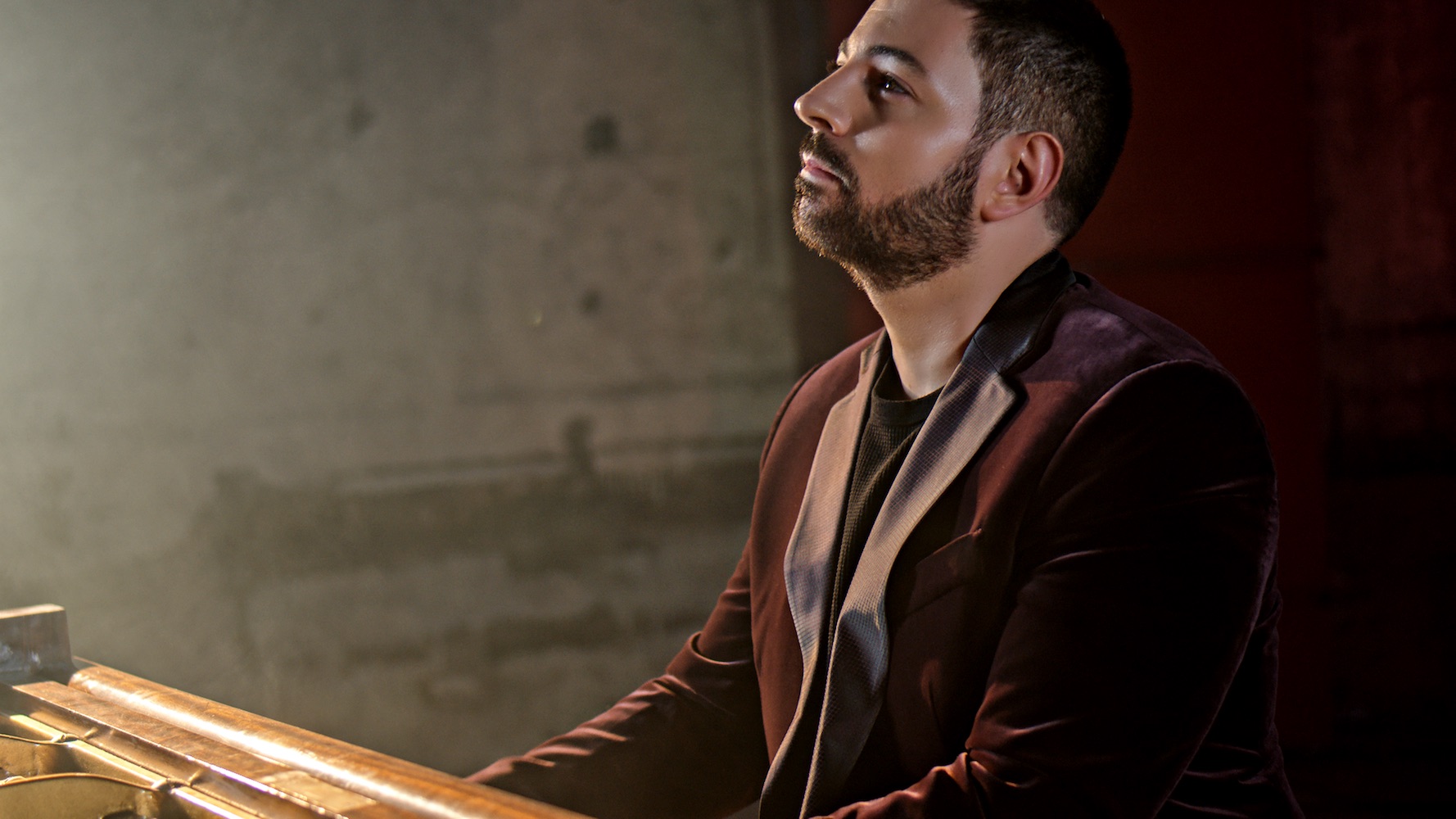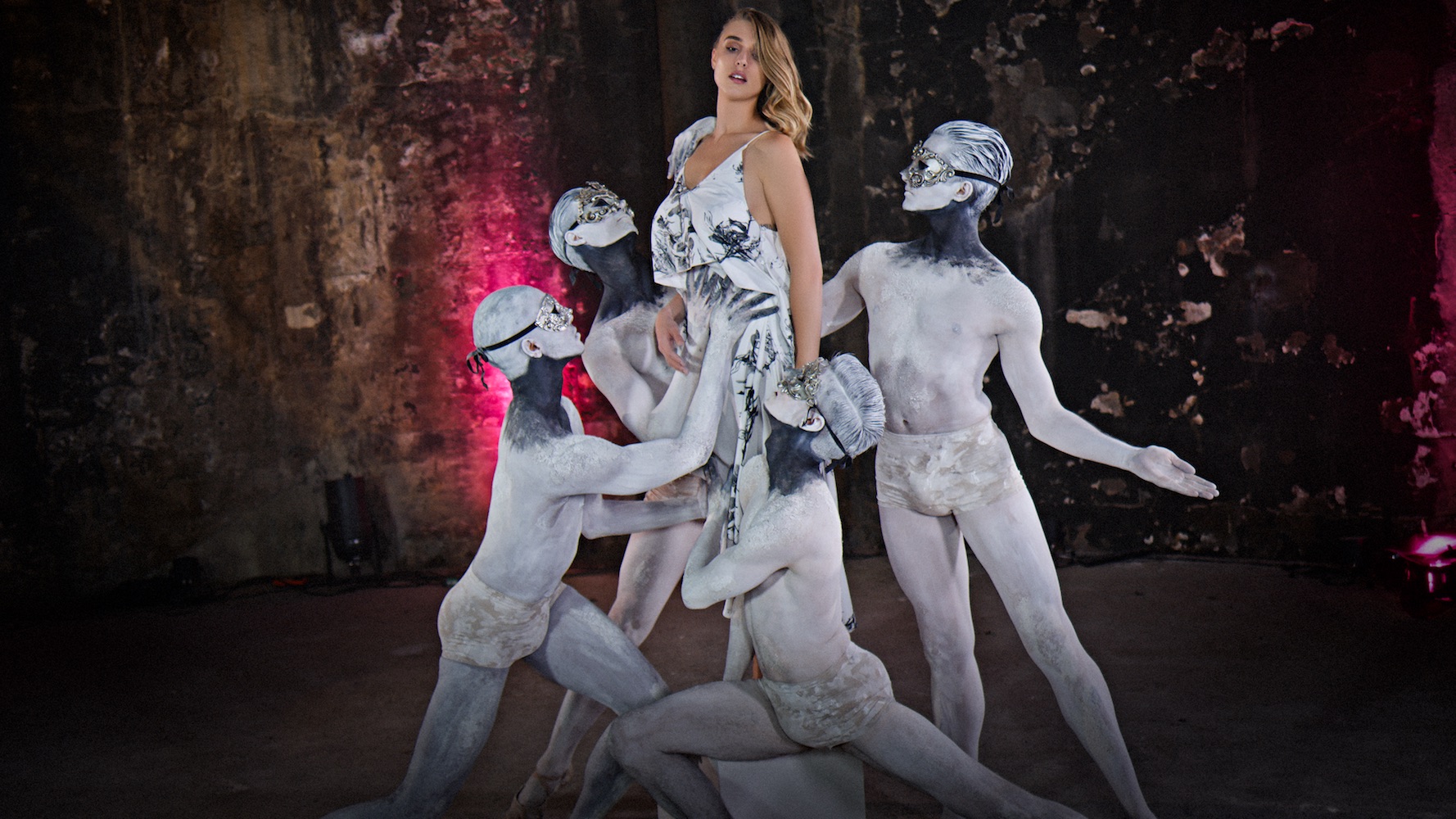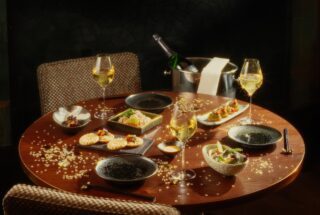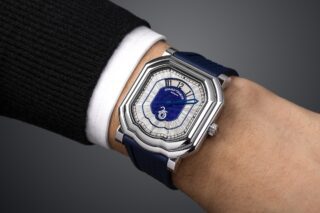This website uses cookies so that we can provide you with the best user experience possible. Cookie information is stored in your browser and performs functions such as recognising you when you return to our website and helping our team to understand which sections of the website you find most interesting and useful.
Pianist Fabio D’Andrea on making classical music come alive
By Rachel Ingram | 29 August 2017 | Culture
Working with Gaia Weiss to Natalie Dormer, this bright young composer is bringing classical music to a contemporary audience

Fabio D’Andrea is one of Britain’s brightest young composers and pianists. His aim is to bring classical music to a contemporary audience and he has been highly acclaimed by critics – his last album Reflection made it into the top 10 of classical hits in the UK and his new video Statues, starring Vikings actress Gaia Weiss, recently won Best Music Video for the LA Shorts Film Festival. The video is part of a wider project for his upcoming record, a solo piano album of 24 original pieces.
When Fabio stopped by to Tempus’s London office to chat about the making of the film and working with the former ballerina, we were delighted to take a sneak peak at the music video, which was filmed in a disused underground tunnel – a perfectly eerie setting for the dreamlike film that shows Gaia’s aspiring ballerina dancing around sculptures who come magically to life.
Here, Fabio tells Tempus all about his new video, working with celebrity friends and why his compositions always have a dance in mind…
Tempus: Please tell us a little about your upcoming album?
Fabio D’Andrea: In the past, many composers wrote 24 pieces, one in each key. I thought it would be nice to do that myself and put my stamp on the musical world. It’s not been done for a long time, so I wanted to revive this tradition. To go with some of the pieces, I am creating a series of videos which combine the mediums of dance, video, acting and music. I also wanted to invite some famous actors to be part of the videos. I’m working with people who have a love of the arts but are not known for their dance skills, so it really showcases their talents in a different light.
Gaia Weiss in Statues from Tempus Media on Vimeo.
What are you working on now, Fabio?
My next solo piano album, which is a collection of 24 original pieces. In the past, many composers wrote 24 pieces, one in each key. I thought it would be quite nice to do that myself and revive this tradition. To go with some of the pieces I wanted to create a series of videos which explore the mediums of dance, video, acting and music, all together. Trying to present it in a contemporary way is the main thing. A lot of composers in the past, their music was so contemporary, it was really relevant for the time. That’s what I want to do now. It’s something that is nice, it’s relaxing, but it’s relevant.
What inspired you to create the music videos for each piece?
I’ve worked a lot in the past with very well-known choreographers. I’ve had premieres at the Royal Ballet, the Royal Festival Hall, the Albert Hall. I’ve worked a lot with associates from the Royal Ballet, Rambo Dance Company, and some other famous dancers in the UK, so I wanted to use the talents of some of my friends who are really top choreographers and feature a lot of dancers from the Royal Ballet and other well-known troupes in these videos. I also wanted to invite some famous actors to be part of the videos, people who have a love of the arts but are not necessarily known for their dance skills, and get them to be part of these videos and showcase their talents in a different light.
Where will we be able to view the videos?
We’ll be putting the series online to introduce people to this concept. What we want to do is create something that’s very visually stunning and eventually we’ll release them all at the same time. The idea is to allow these to grow virally and we’re trying to get a whole group of people interested in contemporary arts, and introduce people to the world of contemporary arts, especially if they’re not familiar with it. So, we’re really hoping that the younger generation will find this exciting. There’s going to be faces that they know in these videos, so at least that will give them something of interest. But equally for other people that aren’t so familiar with the opera houses and the highbrow arts of Europe and London, who want to use this as an introduction to what they could expect to see if they’re to go to the opera houses. It’s a nice way of trying to make it accessible to everybody.
Gaia Weiss is our cover star this issue celebrating her starring role in your piece ‘Statues’. How did your collaboration with her come about?
Gaia is very well known for being in Vikings, and she’s got some amazing projects coming up, but what most people don’t know is that Gaia is a trained ballerina. That’s what she wanted to do before she turned to acting. She’s only at the start of her career, really, and she’s got so much more to come. Gaia is clearly very beautiful, very stunning, but she’s got an edginess to her as well, so I hope that I can bring that out somehow within the video.
Tell us about the concept behind Statues?
Gaia and I were chatting about concepts and we really liked the idea of having her in quite a gritty environment, and I came up with the concept of having our dancers as statues, and as she touched them they would turn to life and dance with her. And then at the end she would see them still again and she would wonder if it was a dream. The piece of music is very dreamlike. We wanted to juxtapose something that’s very beautiful with an environment that’s very raw and gritty. So, I chose to dress the statues in some quite dark, surreal makeup, to make them look as though they’re coming out of this location. We were very fortunate in that we filmed in the Brunel Tunnel in London. It’s the first ever underground tunnel that was built in the world so it’s quite an interesting location. It looks quite surreal inside as well. We filmed it in this tunnel, which again, is quite unusual, getting this ballet scene inside a tunnel. That’s in essence the idea it.
The choreography is beautiful…
I was very fortunate to have one of my close friend, Christopher Marney, choreograph it. He’s the creative director at the Central School of Ballet. He’s really flourishing in his career as a choreographer, he’s one of the UK’s top choreographers at the moment and he’s really soaring. Chris had recently choreographed a ballet about Alexander McQueen, which is doing very well in London, and the four main dancers from the show are the ones that we chose to use for this video. They’re very tall guys, Gaia is incredibly tall too, so we had to make sure we had some ballet dancers who have height. It’s lovely. It has come out very well. It’s a nice start to the series of videos.

What makes you so passionate about music?
I’ve been playing the piano since I was about four and a half years old, so it’s been part of my life for a long time. I really think that my strong point is composition. I’ve written a lot of music that’s used for film and TV. People will be familiar with my stuff from TV shows, TV adverts… my work is on the screens a lot. I’ve worked on a variety of projects. I do work in the pop industry as well. At the moment, I’m performing on a track that’s number five in the charts, the Sigala track Came Here for Love featuring Ella Eyre, I did some of the string playing on that. So, I do a variety of things but I’m mostly known as a pianist and composer.
What highlights of your career so far stand out the most?
I’ve been really fortunate to have some quite fun events I’ve performed at. Since I performed for Tempus at Cannes Film Festival [insert year], I’ve been invited back each year to perform, and those performances have been quite big. One was for de Grisogono the jewellery company, and I flew out the whole orchestra that I have and we were playing a bunch of pop songs I’d scored up. I was in the middle of the orchestra with a catwalk in the middle, and Sharon Stone did a big catwalk runway show displaying the jewellery. Two years ago I played for Naomi Cambell’s birthday party. I’ve been really fortunate, I’ve worked with a variety of people. I’ve performed on stage as well alongside a variety of artists from Katherine Jenkins to Pharrell.
When it comes to composition, what do you start with? What’s the inspiration?
It does change sometimes but I like to improvise a lot. Most of the time my compositions arise out of improvisation. So, I’ll just be improvising on the piano and something will happen. There are times, especially with orchestral composition, I might have an idea for a melody and base it around that, but usually it stems out of me messing about on the piano, and then I happen to do something and I go ‘yep, I like that’, and I’ll develop it further.







